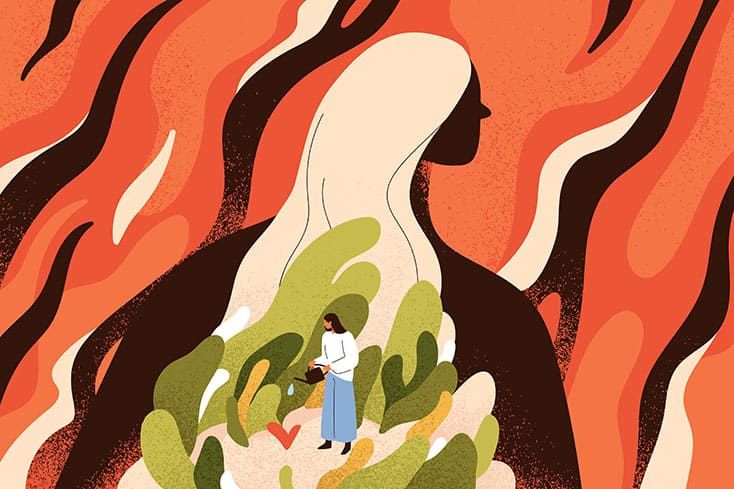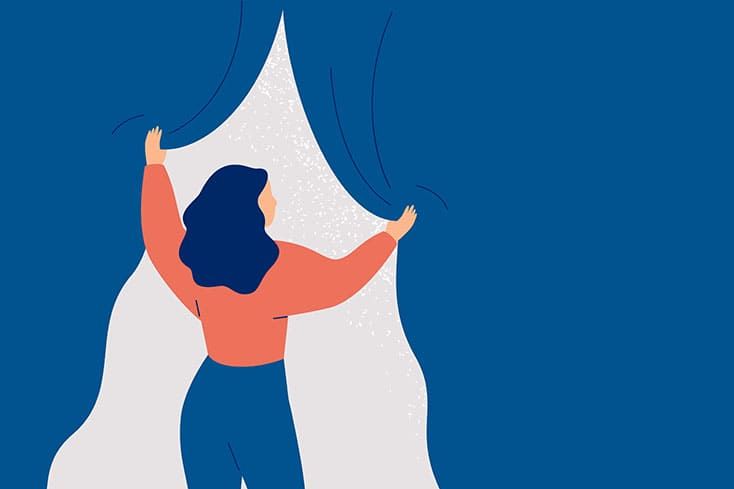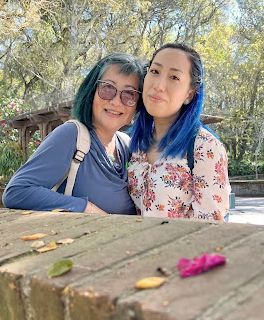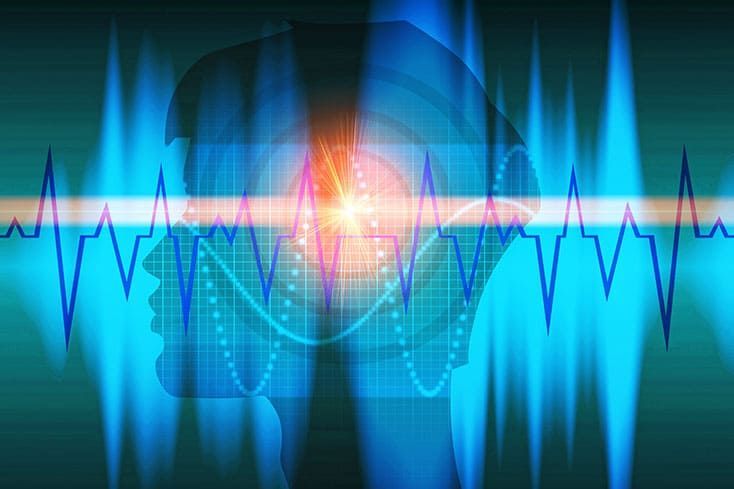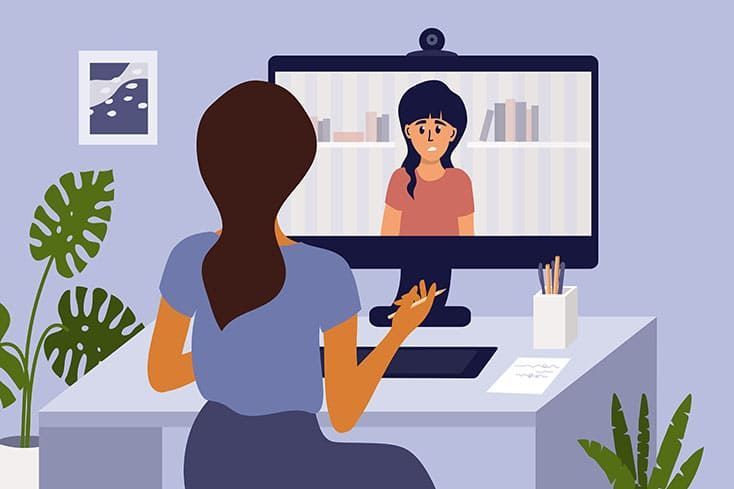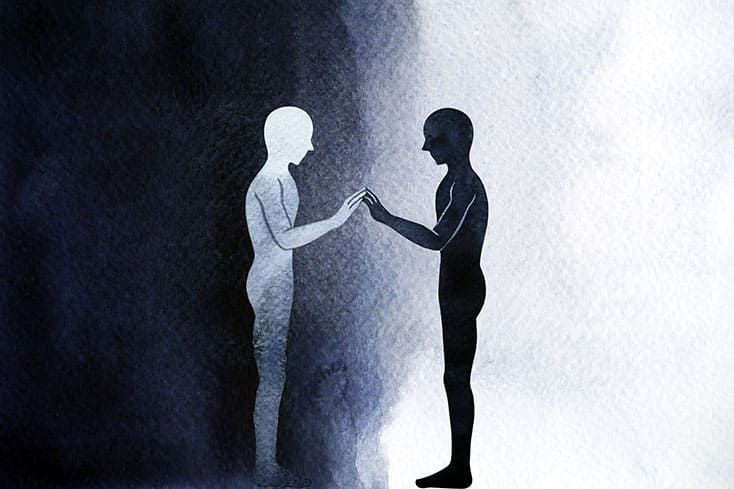躁鬱症譜系中的茁壯成長 | Thriving on the Bipolar Spectrum
By Sara Schley and Devika Bhushan, M.D.
Original article source: https://www.nami.org/advocate/thriving-on-the-bipolar-spectrum-changing-the-narrative-with-stories-of-lived-experience/
March 30, 2023
Scroll down for the English Version ⬇️
當你聽到「躁鬱症」這個詞時,你會想到什麼畫面?也許是一些不值得信任、暴力、情緒波動大或難以預測的人。
我們大概都認識一些患有躁鬱症的人,甚至可能與他們非常親近。但由於精神健康問題的污名,我們可能並不知道他們有這樣的情況。雖然估計有所不同,但大約每38人中就有1人會在一生中被診斷出患有躁鬱症Ⅰ型或Ⅱ型,甚至可能多達每22人中有1人。
然而,儘管患病率很高,關於躁鬱症的負面刻板印象在我們的社會中依然普遍存在,這些刻板印象不僅不真實,而且導致被診斷躁鬱症的患者遭受非常現實的歧視——在工作場所、機會、社會/公民參與以及醫療保健中。事實上,有4/5的人認為與精神健康問題相關的污名和歧視經歷比精神健康問題本身更痛苦。部分原因是由於這種污名,超過一半的美國成人精神病患者未接受治療。
人們對躁鬱症的刻板印象往往來自對處於病情最嚴重階段(甚至更糟)的人的極端看法,但這並不能代表那些接受良好治療的躁鬱症患者。那些對躁鬱症管理得當的人能夠成為最具思考、好奇心、創造力和愛心的自己。
我們兩位,這篇文章的作者,就是這種情況的活生生例子。我們兩人都患有管理良好的躁鬱症。我們自認是成功的專業人士;Sara 是企業家和作家,Devika 是兒科醫生和公共衛生領袖。我們各自都有深厚的社群聯繫,包括與丈夫們持續多年的伴侶關係,還有與孩子、家人、朋友和同事的親密關係。
更複雜的畫面
許多人認為躁鬱症包括狂熱的高峰期——伴隨妄想、幻覺和瘋狂消費——但這其實只是描述了躁鬱症Ⅰ型的狂躁症狀,這是在現在所謂的「躁鬱症譜系」中的一個極端。
那些大腦屬於躁鬱症譜系其他部分的人——例如躁鬱症Ⅱ型——經歷的是嚴重且威脅生命的抑鬱,而不會表現出典型的狂躁症狀。取而代之的是,我們經歷的是稱為輕躁症的較溫和的狀態,伴隨著焦慮、易怒、講話/思考更快以及膨脹的自我感覺,還有抑鬱。
因此,躁鬱症可以存在而沒有狂躁症狀,且通常是如此。事實上,躁鬱症Ⅱ型的患病率實際上是躁鬱症Ⅰ型的1.5倍。抑鬱症經常困擾著躁鬱症Ⅱ型患者,並可能是患者首次向醫生表現出的躁鬱情緒發作種類。由於它看起來與典型的抑鬱症(重度抑鬱症)相似,誤診情況非常普遍。最多有三分之一最初被診斷為典型抑鬱症的人可能實際上處於躁鬱症譜系上,具有如家族病史或個人狂躁/輕躁症狀的關鍵線索,這些通常會被忽略。
這一點非常重要,因為通常為典型抑鬱症開出的抗抑鬱藥物可能導致輕躁症、狂躁症、混合症狀或使躁鬱症病程惡化,帶來危險甚至致命的後果,而穩定情緒劑(與行為治療相結合)可以幫助緩解抑鬱症狀。
污名和誤解的影響
平均而言,躁鬱症Ⅱ型患者需要超過11年才能得到正確的診斷和治療。
在此期間,我們遭受了極大的痛苦,包括成癮、入獄、無家可歸、自殺意念和其他原因造成的死亡。由於長時間的病痛未能得到治療,躁鬱症患者的自殺嘗試風險是重度抑鬱症患者的兩倍。而且我們的早逝風險也高於普通人10到20年,包括因自殺或心臟病等慢性疾病。
以Sara為例,她花了25年才得到正確的診斷。而對Devika來說,則接近三年。這些年是我們和我們所愛的人經歷過的最艱難的時光——在某些時候,我們曾經接近死亡。
我們不希望這樣的事情再發生在其他人身上。我們知道如何有效地診斷和治療躁鬱症。我們希望每個人都能夠及時獲得正確的治療和工具,以迅速康復和茁壯成長。
透過電影改變敘事
我們現在有一個共同的使命,那就是通過傳播教育和啟發,終結污名,促進康復,拯救生命。
Sara 為此寫了一本回憶錄。Devika 在擔任加州代理衛生總監期間,公開分享了她的故事,這使她遇到了Sara,並建立了一個健康社區,致力於消除心理疾病的污名,並傳播康復和韌性工具。
在這個共同的使命中,我們正在製作一部電影,旨在幫助數百萬遭受躁鬱症譜系疾病折磨的人改變現狀。這部電影以Sara的回憶錄命名,我們希望《腦暴風電影》(BrainStorm the Film),預計在2025年上映,將有助於轉變有關生活在躁鬱症譜系上的對話和現實。
這部即將上映的電影將把生活在躁鬱症中的人們的故事、尖端科學和突破性治療結合成一個連貫的敘事,以傳達希望和韌性。請加入我們的旅程,實現我們的使命——創造一個人們可以充分發揮潛力和茁壯成長的世界。
Sara Schley 是《腦暴風電影》的聯合製作人、聯合編劇,她是一位商業顧問、社會變革企業家、演講家和作家。她是一位母親、祖母、社區領袖和26年來的妻子。在她的回憶錄《腦暴風:從破碎到祝福的躁鬱症譜系》中,這部電影的靈感來源,她講述了自己的激動人心的故事。
Dr. Devika Bhushan 是一名兒科醫生和公共衛生領袖,專注於增強韌性和平等。她曾在2022年擔任加州代理衛生總監。自從公開分享她自己的躁鬱症故事以來,Dr. Bhushan 建立了一個健康社區,致力於消除心理疾病的污名,並傳播康復和韌性工具。
When you hear the word “bipolar,” what images come to mind? Maybe someone who is untrustworthy, violent, highly emotional or unpredictable.
We all likely know someone with bipolar disorder — maybe intimately. But thanks to the stigma surrounding mental illness, we may not know that they have a mental health condition. Though estimates vary, about 1 in 38 people will be diagnosed with either bipolar I or II in their lifetimes — and maybe even as many as 1 in 22 people.
Yet, despite the high prevalence, negative stereotypes about bipolar disorder are as common in our society as they are untrue — and revealing a bipolar disorder diagnosis can lead to very real discrimination; in the workplace, in opportunities, in civic/social participation and in health care. In fact, 4 out of 5 people find the experiences of stigma and discrimination related to mental illness to be more painful than mental illness itself. In part because of stigma, more than half of American adults with mental illness are not in treatment.
The stereotypes people hold about bipolar disorder evoke extreme images of folks at their most unwell (or worse than that) — but do not describe people with well-treated bipolar disorder. People with well-managed bipolar disorder are able to be our most thoughtful, curious, creative and loving selves.
Both of us, the authors of this blog, are living proof. We both have well-managed bipolar disorder. We identify as successful professionals; Sara is an entrepreneur and author, and Devika is a pediatrician and public health leader. We each have deep community bonds, including decades-long partnerships with our husbands, as well as loving relationships with our children, family members, friends and colleagues.
A More Complex Picture
While many people understand bipolar disorder to encompass wild highs — with delusions, visions and spending sprees — this actually only describes mania, which is part of bipolar I disorder, at one extreme end of what we now call the “bipolar spectrum.”
People whose brains fall elsewhere on the bipolar spectrum — bipolar II and others — experience severe, life-threatening depression, but do not exhibit classic mania. Instead, we experience a milder elevated state called hypomania, with symptoms like anxiety, irritability, talking/thinking faster and an inflated sense of self, in addition to depression.
So bipolar disorder can exist without mania — and more often does. In fact, bipolar II is actually about 1.5 times more prevalent than bipolar I. Depression commonly afflicts people with bipolar II disorder and can be the first kind of bipolar mood episode that presents to a doctor. And since it looks similar to classic depression (major depressive disorder), misdiagnosis is rampant. Up to one of three people who are initially diagnosed with classic depression may actually be on the bipolar spectrum, with key clues like family history or personal history of mania or hypomania that are often missed.
This is critical to discern because the antidepressants usually prescribed for classic depression can lead to hypomania, mania, mixed symptoms or a worsening course for those with bipolar disorder — with dangerous, even lethal consequences — whereas mood stabilizers (in combination with behavioral treatments) can help lift the depression.
The Impact of Stigma and Misinformation
On average, it takes over 11 years for people with bipolar II to get the correct diagnosis and treatments.
In the meantime, we suffer great pain, including addiction, incarceration, homelessness, suicidality and death from other causes. Due to longer periods of time spent unwell, people with bipolar disorder are twice as likely to attempt suicide as those with major depression. And we're at increased risk for dying 10 to 20 years earlier than the general population, including by suicide or from chronic conditions like heart disease.
In Sara’s case, it took 25 years to get the right diagnosis. For Devika, it was close to three years. These years were the hardest we and our loved ones have known — and we were each close to death at points.
We don’t want this to be the case for anyone else. We know how to diagnose and treat bipolar disorder effectively. We want everyone to be able to access the right treatments and tools to heal and thrive as quickly as possible.
Changing the Narrative with Film
We’re now on a shared mission to end the stigma, maximize healing and save lives by spreading education and inspiration.
Sara wrote a memoir to this end. Devika shared her story publicly while serving as California’s Acting Surgeon General, which led her to meet Sara and build a well-being community to destigmatize mental illness and spread tools for healing and resilience.
In this shared mission, we are making a film that will reach and help change the reality for millions of people suffering from bipolar spectrum disorders. Named after Sara’s memoir, we hope that “BrainStorm the Film,” expected in 2025, will help transform the conversation and realities around living on the bipolar spectrum.
This upcoming film combines stories of people living and thriving with bipolar disorder; cutting-edge science; and breakthrough treatments into one coherent narrative to convey hope and resilience. Please join us on this journey as we realize our mission — a world in which people living with bipolar disorder can unlock their fullest potential and thrive.
Sara Schley, co-producer, co-writer of “BrainStorm the Film,” is a business consultant, social change entrepreneur, speaker and author. She is a mother, grandmother, community leader and wife of 26. In her memoir, “BrainStorm: From Broken to Blessed on the Bipolar Spectrum,” the inspiration for Brainstorm the Film, she tells her riveting story.
Dr. Devika Bhushan is a pediatrician and public health leader focused on enhancing resilience and equity. She served as California’s Acting Surgeon General in 2022. Since sharing her own story with bipolar disorder publicly, Dr. Bhushan has built a well-being community to destigmatize mental illness and spread tools for healing and resilience.
Sign up for our Newsletter
訂閱每月簡訊獲得最新資訊






